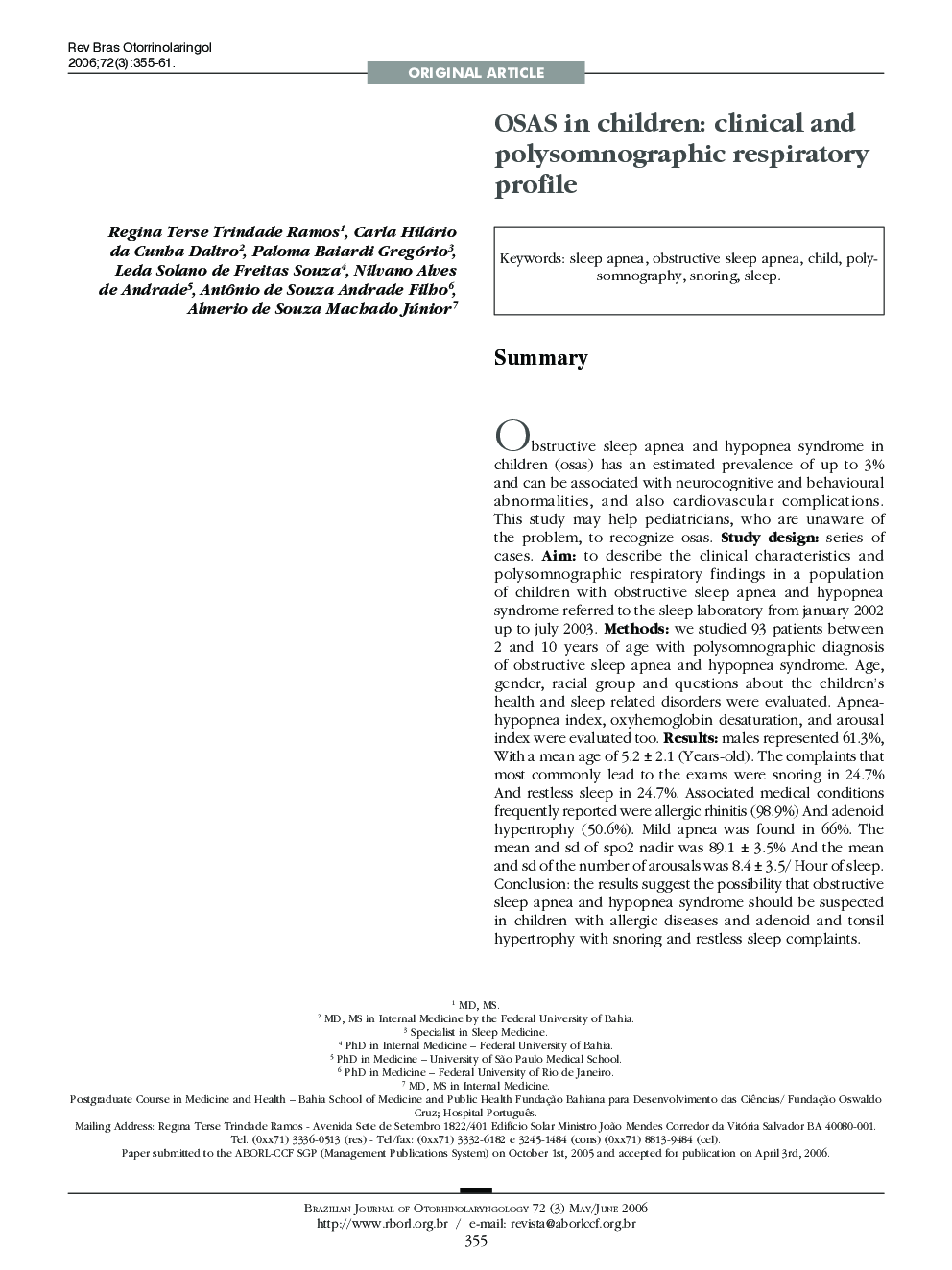| Article ID | Journal | Published Year | Pages | File Type |
|---|---|---|---|---|
| 4107515 | Brazilian Journal of Otorhinolaryngology | 2006 | 7 Pages |
SummaryObstructive sleep apnea and hypopnea syndrome in children (osas) has an estimated prevalence of up to 3% and can be associated with neurocognitive and behavioural abnormalities, and also cardiovascular complications. This study may help pediatricians, who are unaware of the problem, to recognize osas.Study designseries of cases.Aimto describe the clinical characteristics and polysomnographic respiratory findings in a population of children with obstructive sleep apnea and hypopnea syndrome referred to the sleep laboratory from january 2002 up to july 2003.Methodswe studied 93 patients between 2 and 10 years of age with polysomnographic diagnosis of obstructive sleep apnea and hypopnea syndrome. Age, gender, racial group and questions about the children's health and sleep related disorders were evaluated. Apneahypopnea index, oxyhemoglobin desaturation, and arousal index were evaluated too.Resultsmales represented 61.3%, With a mean age of 5.2 ± 2.1 (Years-old). The complaints that most commonly lead to the exams were snoring in 24.7% And restless sleep in 24.7%. Associated medical conditions frequently reported were allergic rhinitis (98.9%) And adenoid hypertrophy (50.6%). Mild apnea was found in 66%. The mean and sd of spo2 nadir was 89.1 ± 3.5% And the mean and sd of the number of arousals was 8.4 ± 3.5/Hour of sleep. Conclusion: the results suggest the possibility that obstructive sleep apnea and hypopnea syndrome should be suspected in children with allergic diseases and adenoid and tonsil hypertrophy with snoring and restless sleep complaints.
